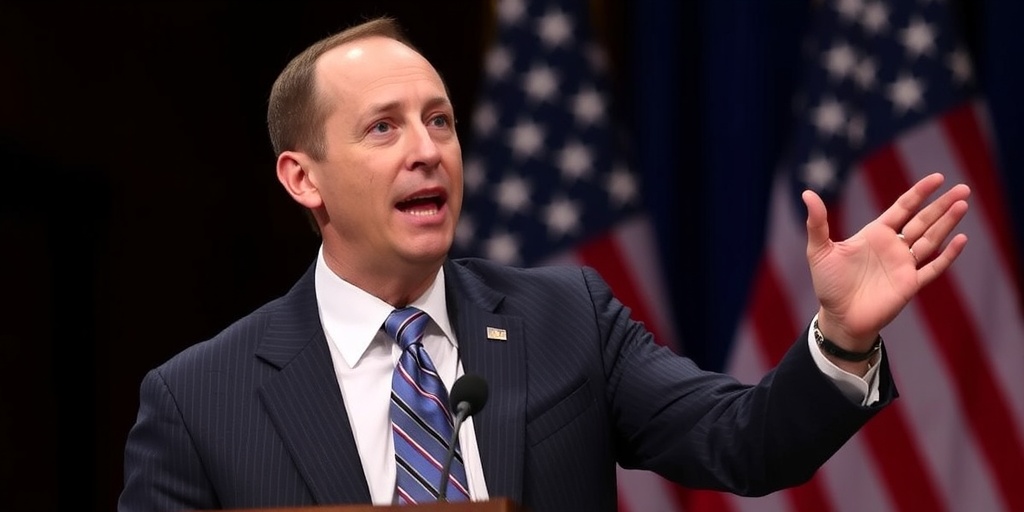Now Reading: Judge Orders Trump Administration to Rehire Thousands of Workers Fired
-
01
Judge Orders Trump Administration to Rehire Thousands of Workers Fired
Judge Orders Trump Administration to Rehire Thousands of Workers Fired

Federal Judge Orders Reinstatement of Thousands of Workers Fired Under Trump Administration’s Initiative
In a significant ruling on Thursday, U.S. District Court Judge William J. Alsup mandated six federal agencies to rehire thousands of workers who had been dismissed under probationary status as part of the Trump administration’s contentious workforce reduction initiative. The judge’s decision marks a notable assertion of judicial authority over executive actions that have come under scrutiny for their legality.
Judge Alsup, presiding in the Northern District of California, concluded that the mass firings orchestrated by the Trump administration were executed unlawfully and without proper oversight. He criticized the actions as a "gimmick" aimed at hastily carrying out a wholesale dismissal of federal employees, which was facilitated by directives from the Office of Personnel Management (OPM), the federal government’s human resources agency.
His ruling specifically targets the Treasury Department, as well as the Departments of Veterans Affairs, Agriculture, Defense, Energy, and Interior, mandating these agencies to comply and offer reinstatement to any employees whose termination was deemed improper. This development arose from a lawsuit brought forth by labor unions representing the affected employees, who challenged the legal foundations of the mass layoffs.
Throughout the proceedings, Judge Alsup emphasized the need for transparency and fairness in the employer-employee relationship within federal agencies. He pointed out that agencies had exploited a loophole that allowed them to terminate probationary workers en masse under the guise of poor performance, regardless of the individuals’ actual job performance or conduct.
"It is a sad day when our government would fire some good employees and assert it was based on performance when they know that is not the case," Judge Alsup asserted, condemning the dismissals as a deceptive tactic designed to circumvent statutory requirements meant to protect federal workers.
Prior to delivering his judgment, Alsup notably sought to clarify the ongoing legal landscape concerning "reduction in force" orders being issued across various agencies. He indicated that while he found the mass firings connected to the earlier directives from the OPM to be an overreach of executive power, this did not impede the legal grounds for properly conducted reductions in force.
“If it’s done right, there can be a reduction in force within an agency; that has to be true,” he stated, acknowledging the lawful provisions allowing Congress to legislate appropriate downsizing measures within government agencies.
The judge had previously expressed an interest in having Trump administration officials, particularly Charles Ezell, the acting head of OPM, testify about the processes leading to the layoffs. However, as the hearing progressed, it became evident that the government was unwilling to produce Ezell for questioning.
Judge Alsup’s latest decision reinstates a previous restraining order aimed at preventing the OPM from implementing any further mass firings. This ruling provides a temporary—but crucial—reprieve for federal worker unions that have vehemently opposed the sweeping measures initiated by the Trump administration.
Danielle Leonard, a lawyer representing the unions, highlighted the far-reaching impacts these firings had on various agencies, which resulted in significant job losses that disproportionately affected younger employees, recent graduates, and even seasoned civil servants who were newly promoted and placed within a probationary period.
“This action by O.P.M. made Swiss cheese of the federal agencies at every level,” Leonard remarked, reflecting on the detrimental effects of the layoffs and the degradation of workforce stability within vital public services.
As federal agencies prepare to comply with Judge Alsup’s ruling, attention will undoubtedly turn to the broader implications for labor rights and government accountability in the wake of executive actions that may be perceived as bypassing legal frameworks designed to protect workers. It remains to be seen how the Biden administration will respond to the court’s directive and what subsequent measures will be put in place to restore the integrity of the federal workforce.
This judicial ruling not only reaffirms the importance of lawful employment practices within the federal workforce but also reinstates hope for those workers whose lives were upended as a result of policies that have now been deemed unjust and unlawful. The reinstatement of these employees stands as a testament to the ongoing struggle for workers’ rights and the crucial oversight role judicial authorities must play in the realm of governance.
Stay Informed With the Latest & Most Important News
Previous Post
Next Post
-
 01New technology breakthrough has everyone talking right now
01New technology breakthrough has everyone talking right now -
 02Unbelievable life hack everyone needs to try today
02Unbelievable life hack everyone needs to try today -
 03Fascinating discovery found buried deep beneath the ocean
03Fascinating discovery found buried deep beneath the ocean -
 04Man invents genius device that solves everyday problems
04Man invents genius device that solves everyday problems -
 05Shocking discovery that changes what we know forever
05Shocking discovery that changes what we know forever -
 06Internet goes wild over celebrity’s unexpected fashion choice
06Internet goes wild over celebrity’s unexpected fashion choice -
 07Rare animal sighting stuns scientists and wildlife lovers
07Rare animal sighting stuns scientists and wildlife lovers





















